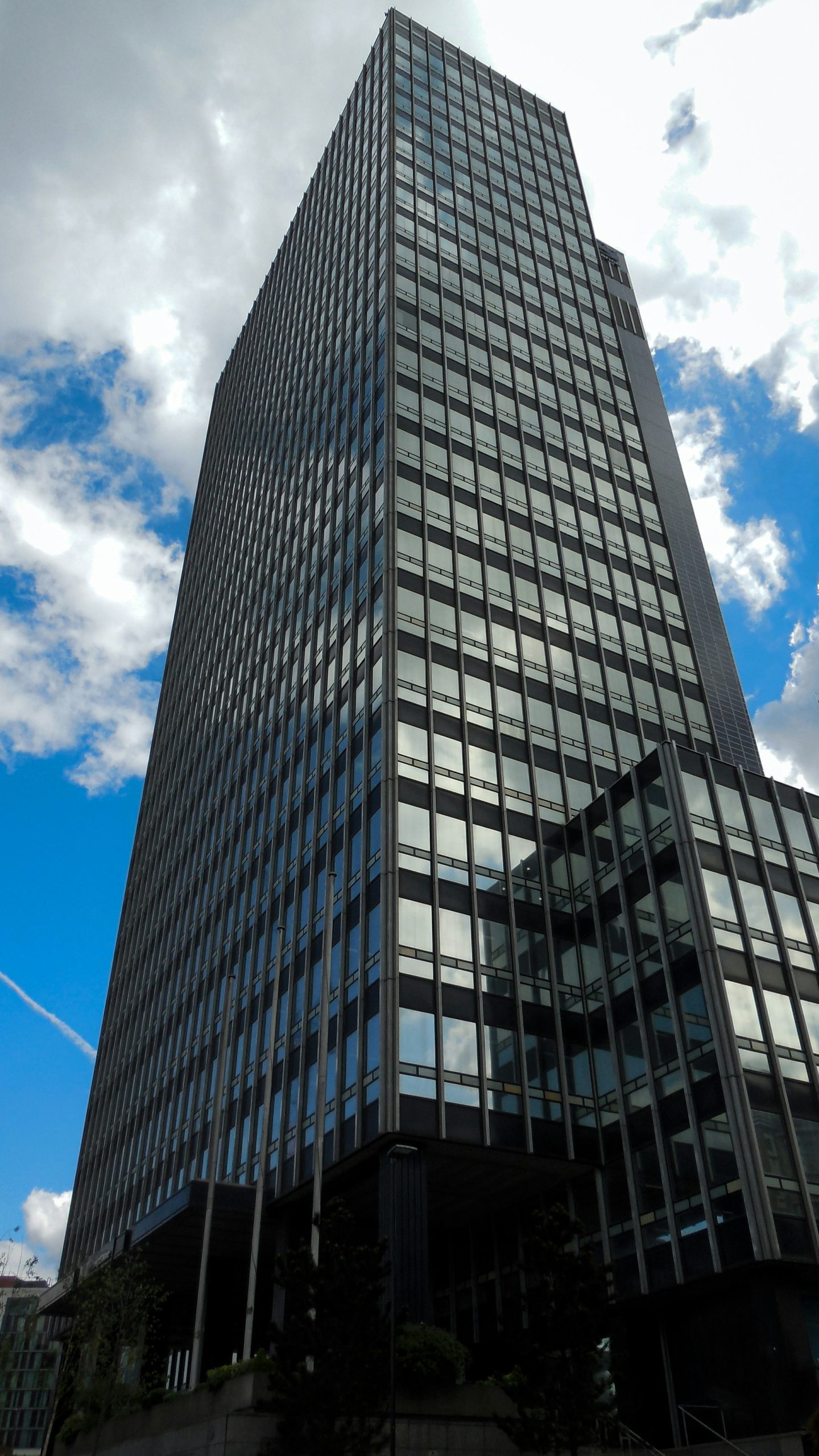High-rise living presents unique challenges during emergencies. Ensuring safety in these towering structures requires a strategic approach tailored to their specific needs. Developing robust emergency response strategies can significantly enhance preparedness and resilience. This comprehensive guide not only outlines essential protocols but also highlights innovative solutions to common challenges. Empower yourself and your community with the tools required to navigate potential crises effectively. Prepare today for a safer tomorrow in urban living.
Understanding High-Rise Living Challenges
High-rise living presents unique challenges, particularly concerning safety and emergency response. Residents often face distinct issues not encountered in lower-level dwellings. For instance, high-rise buildings can be more vulnerable to emergencies such as fires, earthquakes, and power outages. These events necessitate specific urban resilience strategies to ensure the safety and well-being of occupants.
Dans le meme genre : Elevate Your Victorian Home’s Worth: The Ultimate Guide to Eco-Retrofitting in Bath
One major challenge is the emergency response in high-rise environments. Traditional firefighting and rescue operations can be complicated by the building's height, limited access points, and the sheer number of residents. Consequently, emergency services must adapt their strategies to effectively manage these scenarios. This adaptation often includes specialized equipment and training to navigate the unique layout and infrastructure of high-rise buildings.
The importance of tailored emergency response strategies cannot be overstated. High-rise buildings require dedicated evacuation plans, regular safety drills, and robust communication systems to ensure all residents are informed and prepared in case of an emergency. Additionally, integrating advanced technologies, such as automated fire suppression systems and real-time monitoring tools, can significantly enhance building resilience and occupant safety.
Lire également : Essential Guide to Assessing the Structural Soundness of Pre-1950 Properties in London
Addressing these challenges through comprehensive planning and innovation is essential for ensuring the safety and security of high-rise living environments.
Key Components of Emergency Response Strategies
In the context of high-rise preparedness, developing a robust emergency response plan is crucial. Effective emergency response planning hinges on several critical components that ensure safety and efficiency during crises.
Firstly, a comprehensive risk assessment is paramount. High-rise buildings face unique risks due to their structure and occupancy. Identifying potential hazards, such as fire, structural failure, or natural disasters, allows for tailored strategies to mitigate these risks. This assessment should be regularly updated to reflect changes in building usage or new technological advancements.
Communication plays a pivotal role in emergency situations. Clear, concise, and timely information dissemination can significantly impact the outcome of an emergency. High-rise buildings should be equipped with reliable communication systems that function even during power outages. This includes public address systems, emergency alarms, and digital alerts to keep residents informed and coordinated.
Key elements of an effective emergency response plan include:
- Evacuation procedures: Clearly defined routes and assembly points.
- Training and drills: Regular practice to ensure readiness.
- Coordination with emergency services: Establishing protocols for swift response.
By addressing these components, high-rise buildings can enhance their resilience and ensure the safety of their occupants.
Collaboration Between Stakeholders
In high-rise living, stakeholder collaboration is vital for effective emergency response. Engaging residents in emergency planning ensures they are informed and prepared. Residents can participate in safety drills, provide feedback on evacuation plans, and help identify potential risks within their living environment. This involvement fosters a sense of responsibility and readiness.
Property management plays a crucial role in facilitating emergency preparedness. They are responsible for maintaining safety equipment, coordinating drills, and ensuring communication systems are operational. By working closely with residents, property managers can tailor emergency plans to address specific building needs and resident concerns.
Emergency services are indispensable partners in this collaborative effort. They provide expertise in risk assessment and emergency response strategies. By collaborating with property management and residents, emergency services can develop customized response plans that consider the unique challenges of each high-rise building. This teamwork ensures swift and efficient action during emergencies.
Building a culture of preparedness within high-rise communities is essential. Regular training sessions, informative workshops, and open communication channels encourage proactive participation. This culture not only enhances safety but also strengthens community bonds, making residents more resilient and equipped to handle emergencies together.
Regulatory Considerations and Compliance
Navigating emergency regulations and compliance standards is crucial for high-rise safety. High-rise buildings must adhere to a complex web of regulations designed to safeguard residents and property. These include national and local safety codes that govern everything from fire safety measures to structural integrity.
Compliance with these safety codes is not just a legal obligation; it is a fundamental component of building safety. Adhering to regulations ensures that high-rise buildings are equipped to handle emergencies, minimising risks to occupants. This includes maintaining functional fire alarms, sprinklers, and emergency exits, as well as ensuring structural resilience against natural disasters.
Staying updated with changes in regulations is essential for property managers and building owners. Regulatory bodies frequently update safety standards to incorporate new technologies and address emerging risks. Engaging with industry associations, attending seminars, and subscribing to updates from regulatory agencies can help stakeholders remain informed.
To ensure compliance, consider the following:
- Conduct regular audits and inspections.
- Implement a system for tracking regulatory updates.
- Engage with compliance experts for guidance.
By prioritising regulatory compliance, high-rise buildings can enhance their emergency preparedness and ensure the safety of their occupants.
Developing a Comprehensive Emergency Preparedness Plan
Creating a robust emergency preparedness plan is essential for ensuring high-rise safety. Such a plan involves several actionable strategies tailored to the unique challenges of high-rise living.
Initially, assess all potential hazards specific to the building's environment. This includes evaluating fire risks, structural vulnerabilities, and other emergencies that could impact residents. Once identified, these risks inform the development of safety protocols and evacuation procedures.
Incorporating fire safety protocols is a critical component. This involves installing and maintaining smoke detectors, fire alarms, and sprinkler systems. Clearly marked evacuation routes and assembly points should be established and communicated to all residents.
Regular drills and training sessions are vital for reinforcing these protocols. These exercises ensure that residents and staff are familiar with evacuation procedures and can respond effectively during an emergency. Training should cover the use of safety equipment and the importance of remaining calm and coordinated.
To enhance preparedness, consider these steps:
- Develop a risk assessment framework.
- Implement clear communication channels.
- Schedule frequent drills and evaluations.
By integrating these elements, high-rise buildings can significantly improve their emergency preparedness and ensure the safety of their occupants.
Case Studies and Lessons Learned
Exploring emergency response case studies in high-rise settings provides valuable insights into managing crises effectively. By examining notable high-rise incidents, we can glean crucial lessons that inform future planning.
One significant case is the Grenfell Tower fire in London. This tragedy highlighted the importance of robust fire safety measures and effective communication systems. The incident underscored the need for regular safety audits and the implementation of comprehensive evacuation plans. Lessons learned from Grenfell emphasize the urgency of maintaining functional safety equipment and ensuring clear evacuation routes.
Another example is the evacuation of the World Trade Center during the 9/11 attacks. The swift and coordinated response demonstrated the effectiveness of well-rehearsed evacuation procedures. Key takeaways include the necessity of regular training and drills and the importance of collaboration between emergency services and building management.
These lessons learned from past incidents are instrumental in shaping future emergency preparedness strategies. By analyzing these case studies, high-rise buildings can enhance their resilience and readiness. Incorporating these insights into planning ensures that emergency response plans are not only compliant with regulations but also tailored to the unique challenges of high-rise environments.
Checklists and Resources for Effective Preparedness
In the realm of emergency preparedness, having structured checklists and accessible resources is crucial for both residents and management in high-rise buildings. These tools serve as foundational elements for ensuring readiness during unforeseen events.
Emergency preparedness checklists are essential for organizing tasks and responsibilities. For residents, these checklists might include ensuring that smoke detectors are functional, knowing evacuation routes, and having a personal emergency kit ready. Management checklists often encompass regular inspections of safety equipment, conducting evacuation drills, and maintaining communication systems.
To support these efforts, a variety of resources for planning and training are available. These resources can range from online courses to workshops that enhance understanding of emergency protocols. Engaging with these educational tools ensures that all parties are well-informed and capable of responding efficiently during emergencies.
Additionally, downloadable templates for emergency response planning provide a practical framework for developing comprehensive strategies. These templates can be customized to address specific building needs, ensuring that plans are both effective and relevant. By utilizing these checklists, resources, and templates, high-rise communities can significantly bolster their emergency preparedness efforts.
Visual Aids and Technology in Emergency Response
In high-rise buildings, emergency response technology plays a crucial role in enhancing safety and efficiency. These advancements provide innovative solutions that streamline emergency procedures and improve outcomes.
Visual aids for planning are indispensable tools in emergency preparedness. They include detailed maps and diagrams that illustrate evacuation routes and safety zones. These aids help residents and responders quickly understand and navigate the building's layout during an emergency. By providing clear visual guidance, these tools reduce confusion and ensure a more orderly evacuation process.
The integration of innovative solutions in high-rise emergency response is transforming safety protocols. Technologies such as real-time monitoring systems, automated alerts, and smart sensors are becoming standard in modern buildings. These systems provide critical data, allowing for rapid decision-making and timely interventions.
Looking ahead, future trends in high-rise emergency response technology focus on further enhancing connectivity and automation. Innovations like drone-assisted surveillance and AI-driven analytics are on the horizon, promising to elevate the precision and effectiveness of emergency responses. As these technologies evolve, they will continue to shape the landscape of high-rise safety, making buildings safer and more resilient against emergencies.






